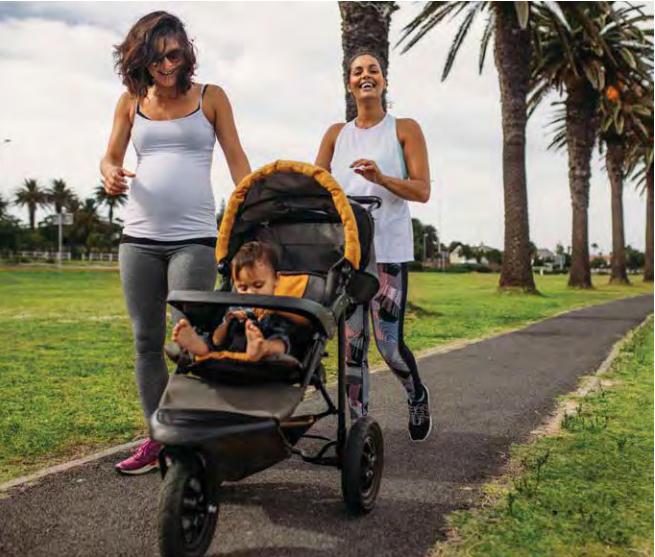The mirror doesn't help: after giving birth it is normal for a woman to feel excessively 'soft', with a few extra pounds and skin that appears lacking in tone. But the global morpho-structural transformation of the organism, in particular of the abdominal muscles, was what allowed the growth of the fetus. Just as the body has undergone mutations to accompany the baby until birth, now is the time to 'work' to feel athletic and agile again. But not just for an aesthetic question: the whole body (and mind) will benefit from it.
All that remains is to get back in shape: nature will do its part (think of the contractions of the uterus induced by the baby's suction) and we can 'help' it.
Here are our 6 tips:
First the belly
This is not 'real' gymnastics but it is very useful after a cesarean section, since it makes movements easier, made painful by the sutures. It is also effective in compensating for postural alterations. The tissue then helps to restore the muscle-tendon-ligament relationship of the belly and to unload the pelvic floor from the excessive weight of the abdominal viscera. It is used when standing upright and removed during sleep.
Abs follow
At least 4 weeks after giving birth, you can start performing specific exercises to tone the abs, but only after having ascertained the absence of diastasis, i.e. the separation of the abs that normally occurs during pregnancy. Otherwise, better wait some more. A first step may be to contract the belly muscles - tightening the abdomen and buttocks - and to release them immediately afterwards. After having trained a little, an easy exercise is performed by lying down on your back with your legs bent, and then slightly raising your head, supporting it with your hands; repeat several times according to resistance. Don't overdo it, at least in the first period. The important thing is consistency.

And the buttocks?
To tone your buttocks, lie on your side, in the fetal position; bring the upper leg up, slightly bent and with the toes extended inward, and hold the position for a count of 8. Repeat the exercise for 3 series of 15 each. If you feel the buttocks stretch up to the thigh, it means that the exercise has been performed correctly. Alternatively, lying on your back, legs slightly apart and back resting firmly on the ground, contract your buttocks and lift them upwards while keeping your feet and legs on the ground; hold the position for 8 seconds and return to the starting position. 3 sets of 15 with small breaks in between.
The breast (at the end of breastfeeding)
The pectorals also need to be strengthened: while seated, bring your palms together with bent elbows and push your hands against each other. Standing, however, with the arms extended outwards at shoulder height, rotate the whole arm back and forth.
Walking is essential
As a moderate activity, walking (30 minutes a day) is perfect: it can also be done with a wheelchair, it improves muscle tone and helps to shed a few extra pounds. A trick for the lazy ones is to choose the most uphill or longest route to get home: it won't be possible to 'think back'! After the first month, you can also run with the stroller. Even normal domestic activity can be a good time to exercise: washing dishes, floors, windows or ironing are all opportunities to tone up your legs and arms.
In water!
Postpartum water gymnastics (or swimming) is ideal: floating, the body is not subject to the force of gravity and, therefore, the perineum is not subjected to excessive stress. The back also benefits. Experts, however, suggest starting after the puerperium (from 40 days after giving birth), especially in the case of a cesarean or episiotomy, so that the healing process is concluded.
Taken from Born Mom | by Carlotta Cordieri




